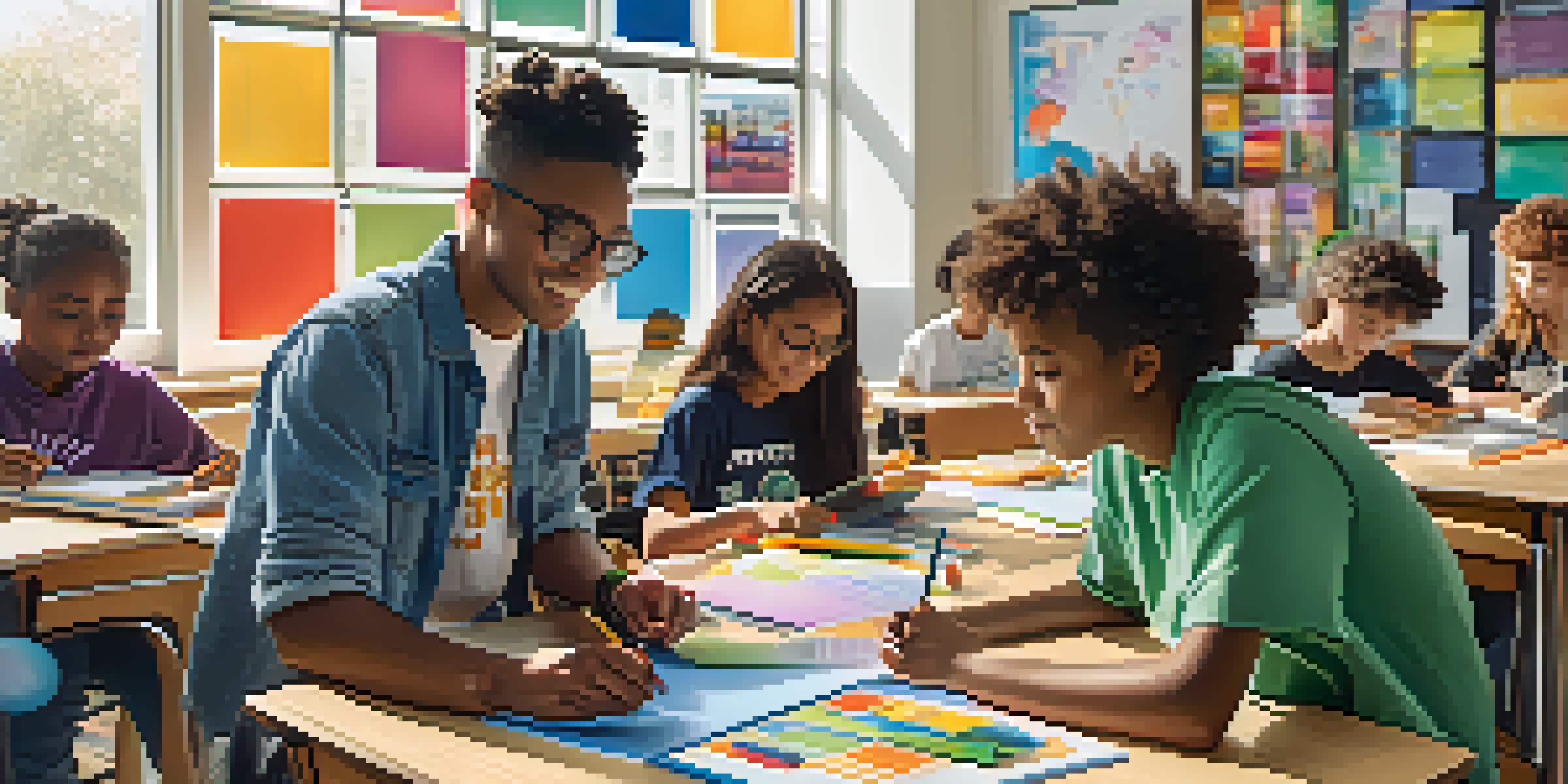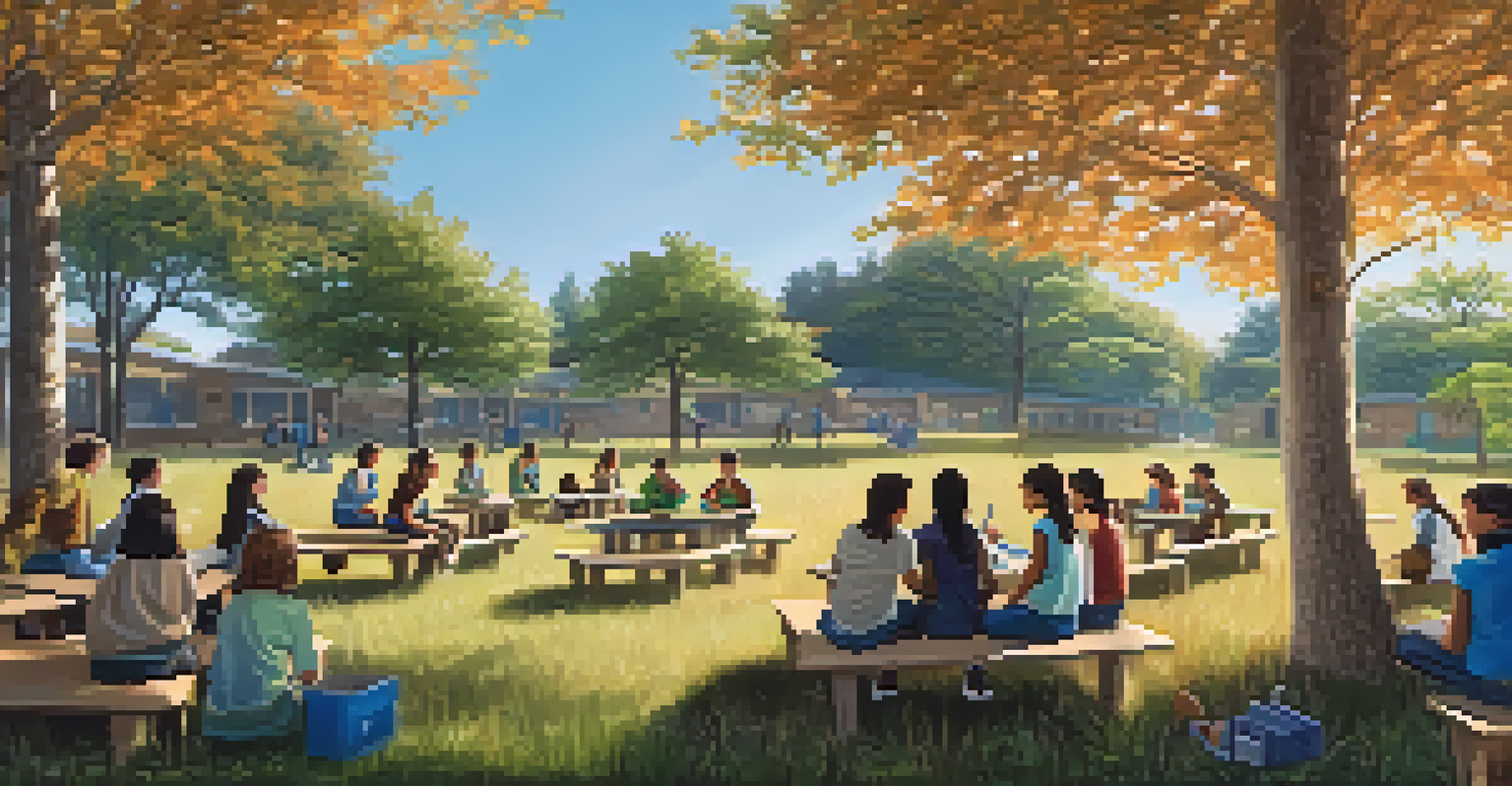Interdisciplinary Learning: Strategies for Classroom Management

Understanding Interdisciplinary Learning in Education
Interdisciplinary learning is an educational approach that integrates multiple subjects into a cohesive learning experience. Instead of teaching subjects in isolation, this method encourages students to make connections across different disciplines, enhancing their understanding and retention. For instance, a project on climate change could incorporate science, geography, and social studies, making the learning more relevant and engaging.
Education is not the filling of a pail, but the lighting of a fire.
This type of learning not only fosters critical thinking but also nurtures creativity and collaboration among students. By working on projects that require input from various subject areas, students can learn how to approach problems from multiple angles. The beauty of interdisciplinary learning is that it mirrors real-world scenarios, where issues are often complex and interconnected.
However, implementing this approach can pose challenges, especially in classroom management. Teachers must navigate the dynamics of group work, varying skill levels, and the integration of diverse content, all while maintaining a structured learning environment.
Establishing a Clear Framework for Projects
To manage interdisciplinary learning effectively, it's crucial to establish a clear framework for projects. This framework should outline specific goals, timelines, and assessment criteria that are agreed upon by all participants. For example, a project could have defined milestones for research, collaboration, and presentation phases, ensuring that students remain focused and organized.

Providing a structured approach helps students to understand expectations and reduces confusion. When students know what is required of them, they are more likely to stay on track and contribute meaningfully to their group. Additionally, this structure allows teachers to monitor progress and intervene if necessary, ensuring that all students are engaged and learning.
Furthermore, a well-defined framework promotes accountability within groups. Students learn to rely on each other, fostering teamwork and responsibility, which are essential skills both in school and in life.
Encouraging Collaborative Learning and Communication
Collaboration is at the heart of interdisciplinary learning, and fostering a culture of open communication is vital. Teachers can encourage students to share ideas, provide feedback, and engage in discussions that challenge their thinking. For instance, using tools like group discussions or online forums can facilitate this exchange of ideas, making it a natural part of the learning process.
The beautiful thing about learning is that no one can take it away from you.
Moreover, incorporating technology can enhance collaboration by allowing students to work together in real time, even if they are not in the same physical space. Tools such as Google Docs or collaborative platforms can help students organize their thoughts and contributions seamlessly. This not only improves their digital literacy but also prepares them for future workplaces where remote collaboration is increasingly common.
By creating a classroom atmosphere where communication is encouraged, students feel more comfortable sharing their ideas and taking risks. This leads to deeper learning and a more dynamic and inclusive classroom environment.
Utilizing Diverse Assessment Methods for Evaluation
Assessing student learning in interdisciplinary projects requires a variety of assessment methods to capture the full scope of student understanding. Traditional testing may not adequately reflect the skills and knowledge gained through collaborative projects. Instead, teachers can use methods such as peer assessments, self-reflections, and project-based evaluations as part of their assessment strategy.
For example, including a rubric that assesses not only the final product but also the collaborative process can provide a more comprehensive understanding of student performance. This approach encourages students to reflect on their contributions and learn from their peers, fostering a growth mindset.
Additionally, diverse assessment methods allow teachers to tailor feedback to individual students, addressing their unique strengths and areas for improvement. This personalized feedback supports student growth and helps them take ownership of their learning journey.
Creating an Inclusive Environment for All Learners
In an interdisciplinary classroom, inclusivity is essential for fostering a positive learning environment. Teachers need to ensure that all students feel valued and have equal opportunities to participate. This can be achieved by recognizing and accommodating diverse learning styles, backgrounds, and abilities within the classroom.
For instance, using a variety of teaching methods—such as hands-on activities, visual aids, and discussions—can cater to different learning preferences. Additionally, forming diverse groups allows students to learn from one another’s perspectives and experiences, enriching the learning process.
An inclusive environment not only enhances student engagement but also fosters respect and empathy among peers. When students feel included and respected, they are more likely to take risks in their learning and contribute to group discussions.
Incorporating Real-World Connections into Learning
Interdisciplinary learning thrives on real-world connections that make academic content relevant and engaging. By linking classroom activities to current events or community issues, teachers can enhance student interest and motivation. For instance, a project that explores local environmental challenges can inspire students to think critically about solutions while applying knowledge from various subjects.
Engaging with community experts or organizations can further deepen these connections. Inviting a guest speaker from a local environmental group or organizing field trips can provide students with firsthand experience and insights, making their learning more tangible and impactful.
These real-world connections not only enrich the curriculum but also help students see the significance of their education in everyday life. When students understand how their learning applies to the world around them, they are more likely to stay engaged and inspired.
Fostering a Growth Mindset in Students
Promoting a growth mindset is crucial in an interdisciplinary learning environment. This mindset encourages students to view challenges as opportunities for growth rather than obstacles. Teachers can model this mindset by sharing their own learning experiences and emphasizing the value of effort and persistence.
Incorporating activities that highlight the learning process, such as reflection journals or group discussions about setbacks, can help students develop resilience. By normalizing the idea that mistakes are part of learning, students are more likely to take risks and embrace new challenges.

Ultimately, fostering a growth mindset not only supports academic success but also prepares students for future challenges in life. When students believe in their ability to improve and learn, they are more likely to approach interdisciplinary projects with enthusiasm and confidence.